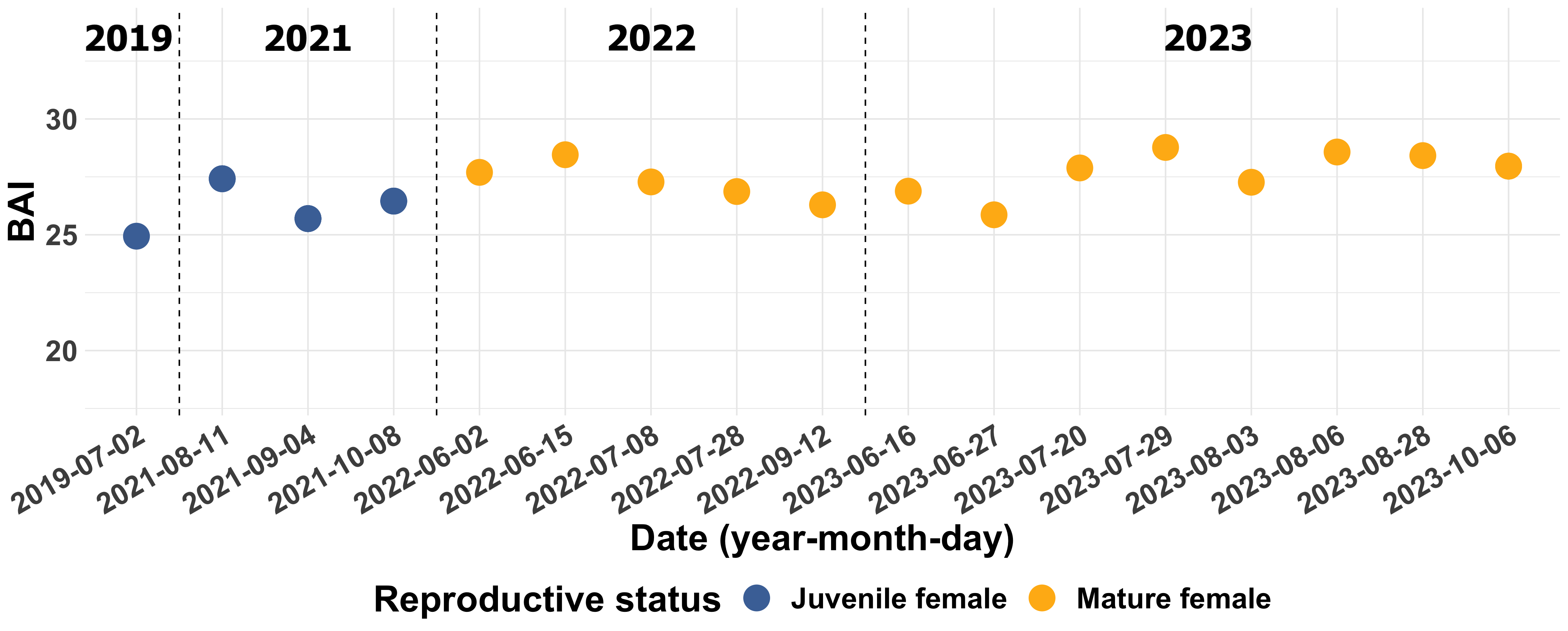Pacman gets her name from the recognizable spot on her left side that looks like everyone’s favorite arcade game from the 80’s: Pac-man! Except we sometimes call her Ms. Pacman, since she is a female born to the famous Scarlett in 2014. Pacman is an example of successful “recruitment” to the PCFG population since she has returned to the Oregon coast many times since her birth. Across our many sightings of Pacman we have often seen her foraging in very close proximity to several older whales, including her mother Scarlett and Orange Knuckles, suggesting that she may be trying to copy and master complex feeding behaviors from more seasoned PCFG whales. These whales feed in shallow reef and kelp areas where capturing zooplankton prey is tricky, so whales perform cool but complicated feeding behaviors like side swimming, jaw snapping, and bubble-blasting, which probably take some practice to get right. We have watched Pacman repeat these behaviors right after nearby older whales performed the behavior (see image to the right), hinting that she is practicing and learning how to be a successful PCFG gray whale.

Pacman
- Sex: Female
- First Sighted: 2014
Did You Know?
Pacman was born in 2014 to Scarlett and has since been learning how to feed in Oregon’s complex coastal waters.
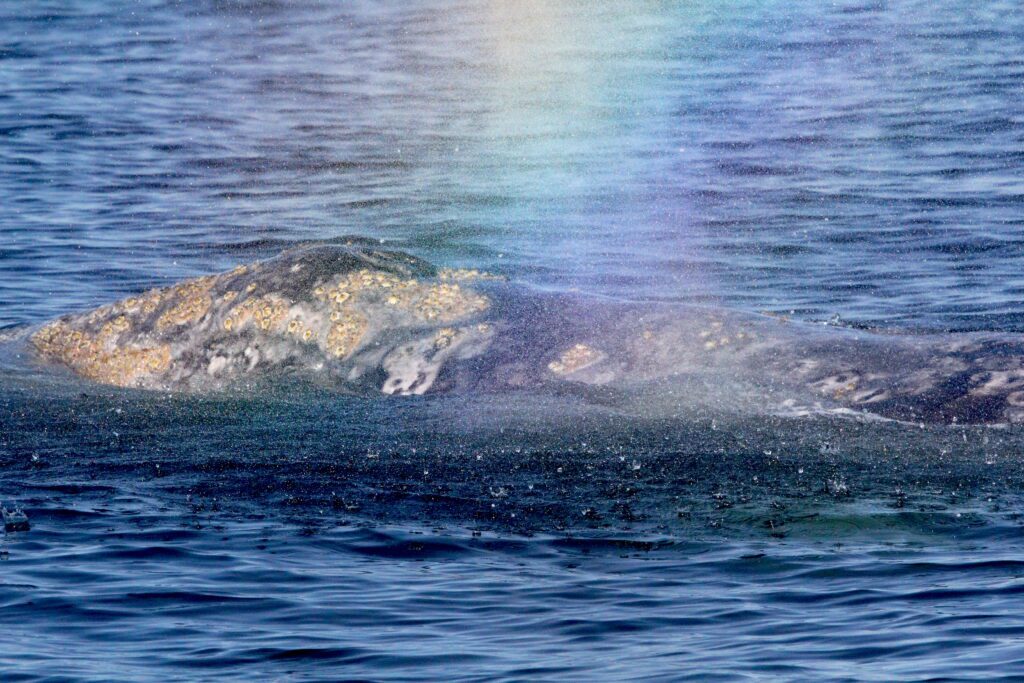
About Pacman
Friends of Pacman
Kent and Edith Hitchings
#BARINAFOREVER
Jesse Stevens and Jack Director
Dottie Stratton
Hanna Sprague
Avery Allen Chandler
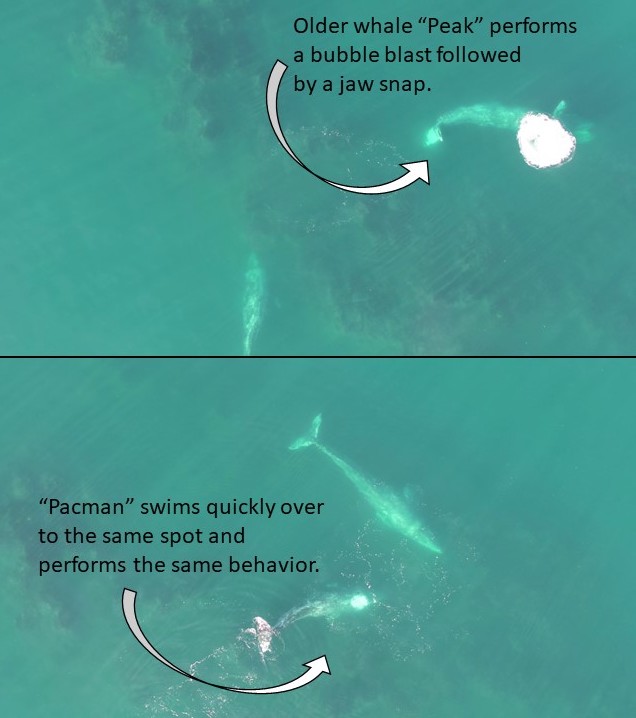
Facts and Figures
- Sex: Female
- First Identified: 2014
- Est. Length: 10.28 m
How to Identify Pacman:
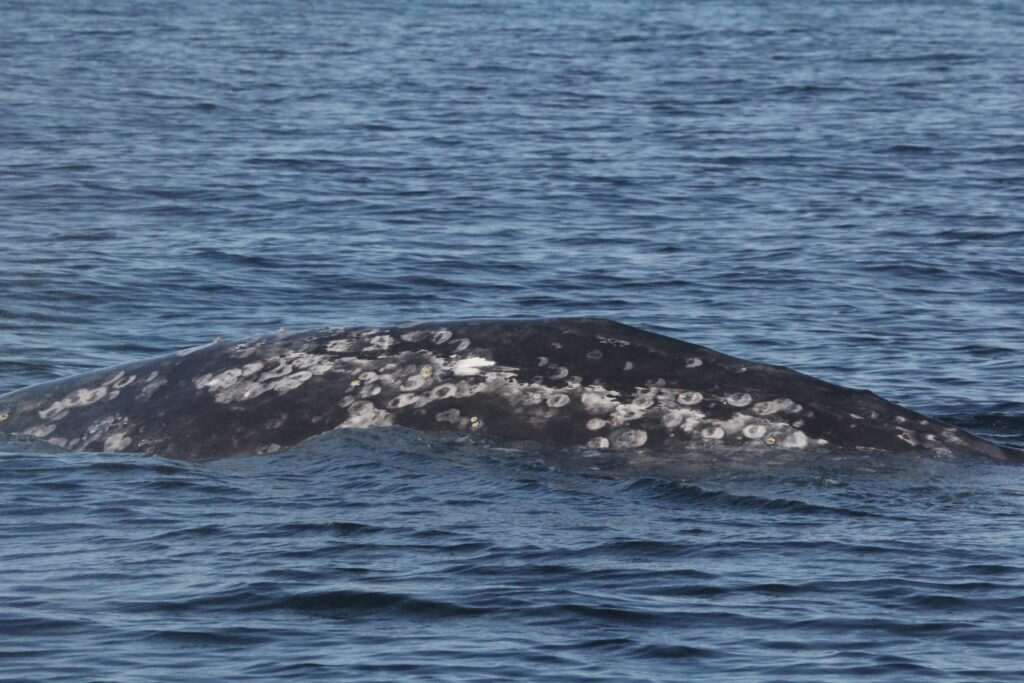
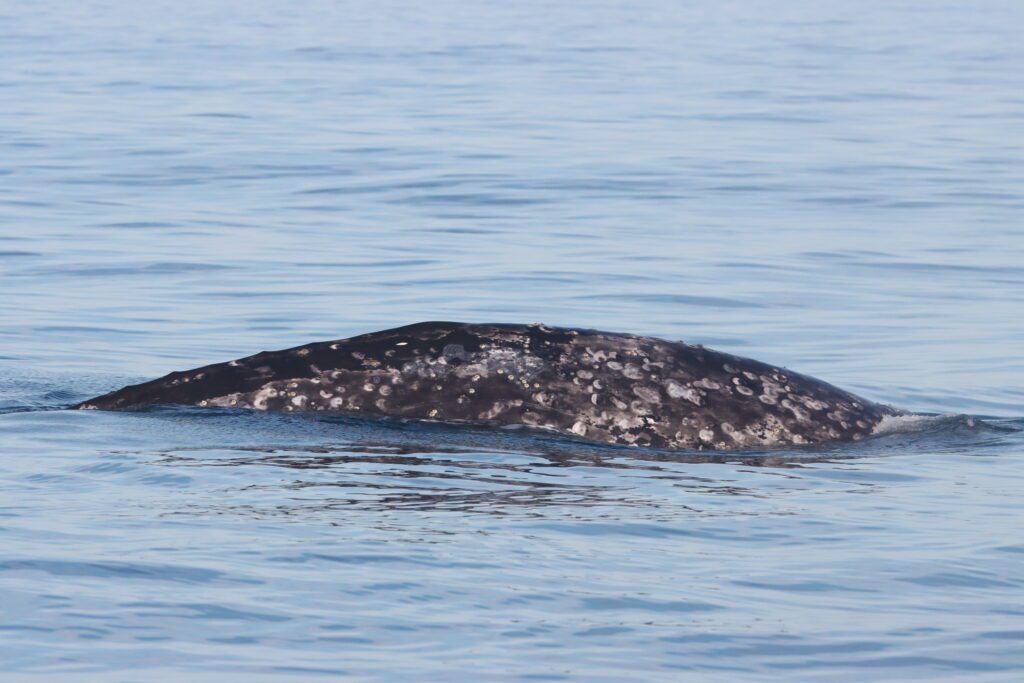
Pacman's Health History
We started measuring Pacman in 2019 when she was 5 years old but we were only able to measure her body condition once that year. In 2021, we obtained three measurements and it appears that Pacman struggled to gain much weight during the foraging season and this may be due to overall poor environmental and prey conditions in 2021. We have longer body condition records for Pacman in 2022 and 2023 which show that while Pacman’s weight seems to fluctuate, it generally hovers around a BAI of 27. Juvenile whales are still learning how to survive in the wild and on their own, so they may struggle more than adults to forage successfully.
We fly drones over whales and then measure how skinny or fat they are from the images we capture. We compare the body condition of whales using an index called the Body Area Index (BAI), which is like the Body Mass Index (BMI) used to compare the body condition of humans. Small BAI values mean the whale is skinnier and larger BAI values indicate the whale is fatter.

